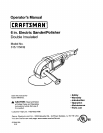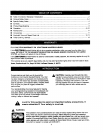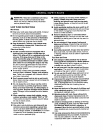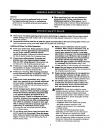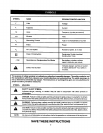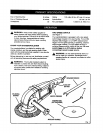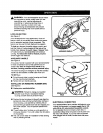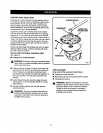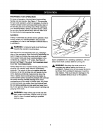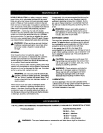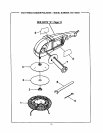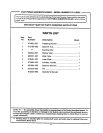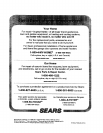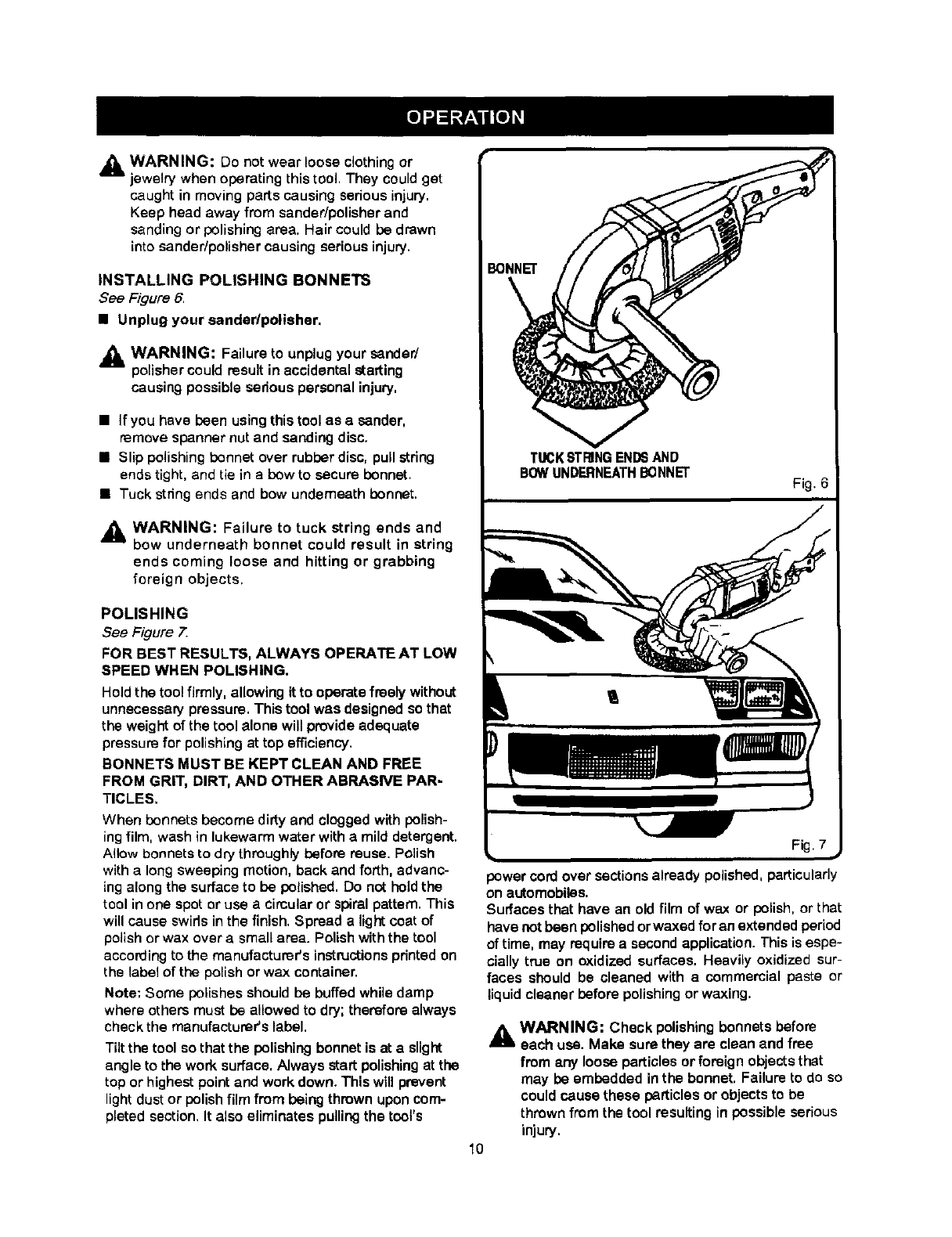
_1=WARNING:Donotwear loose clothing or
jewelry when operating this tool, They could get
caught in moving parts causing sehous injury.
Keep head away from sender/polisher and
sanding or polishing area. Hair could be drawn
into sender/polisher causing serious injury,
INSTALLING POLISHING BONNETS
See Figure 6.
• Unplug your sander/polisher,
_IL WARNING: Failure to unplugyour sender/
polisher could result in accidentalstarting
causing possiblesedous personal injury.
• if you have been using this tool as a sender,
remove spanner nut and sanding disc,
• Slip polishing bonnet over rubber disc, pull string
ends tight, and tie in a bow to secure bonnet.
• Tuck stnng ends and bow underneath bonnet.
_. WARNING: Failure to tuck string ends and
bow underneath bonnet could result in string
ends coming loose and hitting or grabbing
foreign objects,
POLISHING
See Figure
FOR BEST RESULTS, ALWAYS OPERATE AT LOW
SPEED WHEN POLISHING.
Hold the tool firmly, allowingit to operate freely without
unnecessary pressure. This tool was designed so that
the weight of the tool alone will provide adequate
pressurefor polishing at top efficiency.
BONNETS MUST BE KEPT CLEAN AND FREE
FROM GRIT, DIRT, AND OTHER ABRASIVE PAR-
TICLES.
When bonnets become dirty and clogged with polish-
ing film, wash in lukewarm water with a mild detergent.
Allow bonnets to dry throughly before reuse. Polish
with a long sweeping motion, back and forth, advanc-
ing along the surface to be polished. Do not hold the
tool in one spot or use a circular or spiral pattern. This
will cause swids in the finish. Spread a light coat of
polish or wax over a small area. Polish with the tool
according to the manufacturer's instructions printed on
the label of the polish or wax container.
Note; Some polishes should be buffed while damp
where others must be allowed to dry; therefore always
check the manufacturer's label.
Tilt the tool so that the polishing bonnet is at a slight
angle to the work surface, Always start polishing at the
top or highest point and work down. This will prevent
light dust or polish film from being thrown upon com-
pleted section, It also eliminates pulling the tool's
TUCKSTF_NGENDSAND
BOWUNDERNEATHBONNET
Fig. 6
Fig. 7
power cord over sections already polished, particularly
on automobiles.
Surfaces that have an old film of wax or polish, or that
have not been polished or waxed for an extended period
of time, may require a second application. This is espe-
cially true on oxidized surfaces. Heavily oxidized sur-
faces should be cleaned with a commercial paste or
liquid cleaner before polishing or waxing.
10
_k WARNING: Check polishing bonnetsbefore
each use. Make sure theyare clean and free
from any loose particlesor foreign objectsthat
may be embedded inthe bonnet. Failureto do so
couldcause these particlesor objectsto be
thrown fromthe tool resultingin possible serious
injury,



